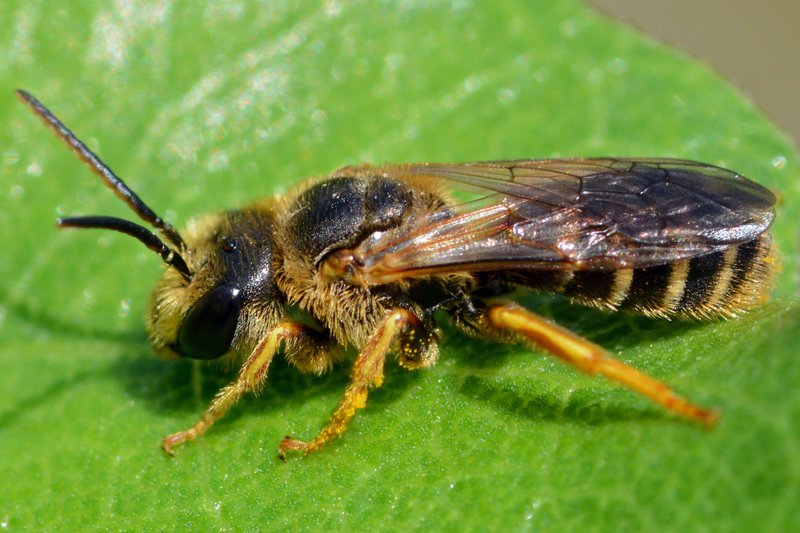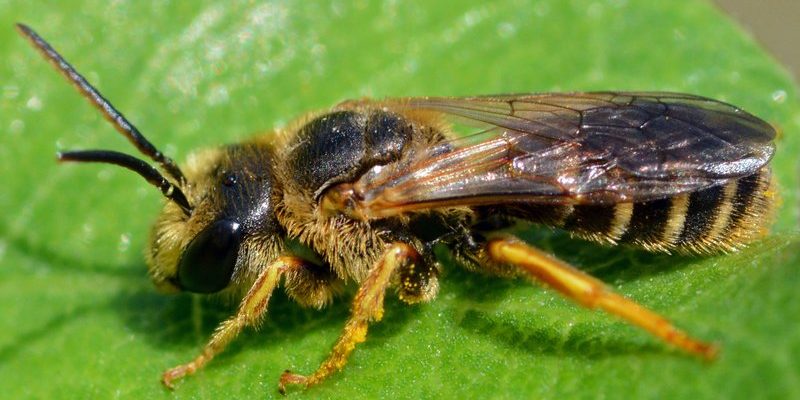
While other bees might be busy making honey or living in hives, sweat bees have a less glamorous job. They’re often found hanging around areas where humans are active, looking for salt and moisture. Maybe it’s because they just really like the taste of your sweat! So, let’s dive into some interesting facts about these unique pollinators and discover why they’re more remarkable than you might think.
What Are Sweat Bees?
Sweat bees belong to the family Halictidae and are part of a larger group known for their metallic sheen. With over 1,000 species found primarily in the United States, these bees can be colorful and beautiful. They range from shiny green to blue and even purple hues. But don’t let their vibrant appearance fool you—sweat bees are tiny, usually measuring just 1/8 to 1/2 inch in length.
Unlike honey bees, sweat bees are mostly solitary. They like to build their nests in sandy, bare soil, which is a bit different from the bustling hives we often picture. There’s something charming about their independent nature, as they don’t rely on a colony to support them. Each female typically manages her own brood, laying eggs in small burrows and providing them with nectar and pollen.
Why Do Sweat Bees Like Sweat?
You might be wondering why these bees are so attracted to human sweat. The answer lies in their need for minerals and salts, which are plentiful in our perspiration. When we exert ourselves—think of that summer jog or a fun game of sports—our bodies release sweat. Sweat bees swoop in, hoping to gather the nutrients they crave.
Here’s the thing: sweat bees are not aggressive. They won’t sting unless they feel threatened, making them relatively harmless companions outdoors. Honestly, it’s kind of sweet that they show up just to get a little taste of what our bodies produce. So don’t be alarmed if you see one hovering near you—just think of it as sharing a moment with nature!
Do Sweat Bees Pollinate?
Absolutely! Sweat bees play a crucial role in pollination, helping various plants reproduce. When they visit flowers to collect nectar and pollen, they inadvertently transfer pollen from one bloom to another, promoting plant growth. This process is vital for many fruits, vegetables, and wildflowers.
Some studies even suggest that sweat bees might be more effective pollinators for certain plants than honey bees. They tend to visit more flowers in a shorter amount of time, which can significantly impact plant diversity and agriculture. So, the next time you see a sweat bee, consider it an unsung hero in the ecosystem.
Life Cycle of a Sweat Bee
Sweat bees go through a fascinating life cycle that’s relatively straightforward but full of surprises. It begins in spring when the female emerges from her winter dormancy. Let me explain: she’ll search for a suitable nesting site, often in sandy soil or bare ground. After finding a spot, she digs a small burrow where she lays her eggs.
Once the eggs are laid, she collects nectar and pollen to store for her offspring. The larvae will feed on this nutritious stash after they hatch. It’s a simple yet effective way to ensure that the next generation has everything they need to grow. By late summer, the young bees mature, and the cycle starts anew, ensuring the continuation of their species.
Common Misconceptions About Sweat Bees
When people think of bees, they often picture the larger, more aggressive species. Sweat bees, on the other hand, tend to get a bad rap. One common misconception is that they’re harmful or aggressive. In reality, as mentioned earlier, they’re generally very docile. Most species don’t even possess the ability to sting unless provoked.
Another myth is that sweat bees are the same as wasps. While they both belong to the Hymenoptera order, they are entirely different. Wasps are typically more predatory and aggressive, while sweat bees focus on collecting pollen and nectar. Understanding these distinctions can help foster a greater appreciation for these tiny creatures that play an essential role in our environment.
How to Attract Sweat Bees to Your Garden
If you’re interested in helping these little pollinators thrive, attracting sweat bees to your garden is a great idea. Here are a few simple steps you can take:
- Plant native flowers: Choose plants that naturally grow in your region. They’re more likely to attract local sweat bees. Flowers like daisies, sunflowers, and clover are wonderful options.
- Avoid pesticides: Chemicals can harm pollinators. Try using organic gardening methods to maintain a bee-friendly environment.
- Provide water sources: A shallow dish of water or a mud puddle can be inviting. Bees need hydration just like we do!
Creating a bee-friendly garden not only helps sweat bees but also other vital pollinators. It’s a win-win for you and the environment!
Sweat bees may be small and easy to overlook, but they play a significant role in our ecosystem. From their unique attraction to human sweat to their efficiency as pollinators, they offer a fascinating glimpse into the diverse world of bees. The next time a little sweat bee buzzes by, remember that it’s just looking for some minerals to thrive.
So, whether you’re enjoying a day outside or planting a garden, keep an eye out for these charming creatures. Embrace their presence, and let their natural beauty enhance your outdoor experiences. They might not be the most glamorous bees, but they certainly have a lot to offer!

